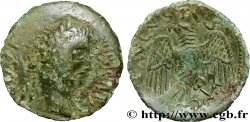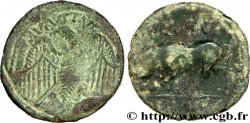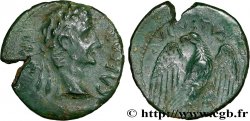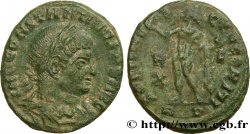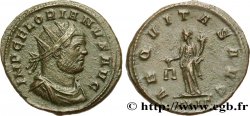Live auction - bga_820914 - CENTER, UNSPECIFIED Bronze à l'aigle (semis ou quadrans), imitation
You must signin and be an approved bidder to bid, LOGIN TO BID. Accounts are subject to approval and the approval process takes place within 48 hours. Do not wait until the day a sale closes to register. Clicking on "BID" constitutes acceptance of the terms of use of cgb.fr private live auctions.
Bids must be placed in whole Euro amounts only. The sale will start closing at the time stated on the item description; any bids received at the site after the closing time will not be executed. Transmission times may vary and bids could be rejected if you wait until the last second. For further information check the Live auction FAQ
All winning bids are subject to a 18% buyer’s fee.
All winning bids are subject to a 18% buyer’s fee.
| Estimate : | 250 € |
| Price : | 106 € |
| Maximum bid : | 106 € |
| End of the sale : | 09 July 2024 15:41:51 |
| bidders : | 2 bidders |
Type : Bronze à l'aigle (semis ou quadrans), imitation
Date: c. 15-10 AC.
Metal : bronze
Diameter : 18 mm
Orientation dies : 3 h.
Weight : 2,41 g.
Rarity : R2
Coments on the condition:
Exemplaire bien centré au droit et décentré au revers. Frappe un peu molle des deux côtés, et manque de métal à neuf heure. De jolis détails; particulièrement au revers avec un très bel aigle. Patine verte
Obverse
Obverse legend : IMP - CAESAR.
Obverse description : Tête laurée d’Auguste à droite ; grènetis.
Obverse translation : “Imperator Cæsar”, (l’empereur césar).
Reverse
Reverse legend : [AVGVST]VS.
Reverse description : Aigle de face, la tête tournée à gauche, les ailes déployées.
Reverse translation : “Augustus”, (Augustus).
Commentary
A mi-chemin entre les monnaies romaines et les monnaies gauloises, ce rare bronze est d’un style merveilleux, avec une élégante épigraphie IMP CAESAR.
Le portrait d’Auguste est “celtisé”, avec une modification du traitement de l’œil, du nez et de la bouche.
Le portrait d’Auguste est “celtisé”, avec une modification du traitement de l’œil, du nez et de la bouche.








 Report a mistake
Report a mistake Print the page
Print the page Share my selection
Share my selection Ask a question
Ask a question Consign / sell
Consign / sell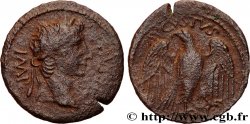
 Full data
Full data